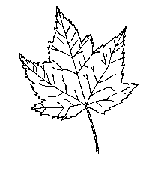Yes, friends, it's that time of year again! Welcome to my blog about all of our fabulous explorations in science class. On this blog, I'll post our weekly topics and some key questions you can ask your student to review material and extend thinking. I'll also try to add some links to science -related community events.
A welcome letter from me went home with Thursday folders today, but feel free to contact me if you have questions or would like another copy. My new BUSD email is caitlinjenkins@berkeley.net.
Here's what we've been up to in class:
5th Grade: In the first week of class, we did a fun activity that tested our sense of smell. I put common items in containers covered with a paper towel. Students smelled and reported what they thought was in the cup. The idea was to have some fun on the first day, and to also introduce some key parts of the scientific method - focus question, data collection, conclusion.
Since then, we've been working on getting our science notebooks set up. I have a grand vision for them this year - they now are more organized, have sentence starters to help kids and a work habits self reflection section.
Our first activity for our physical science unit was yesterday. Students conducted observations of some solids (gravel, powder, salt) and then mixed them with water to create a mixture. We then attempted to separate these three mixtures using a screen and a coffee filter. We had success with two of the mixtures, but weren't able to separate the salt and water. We'll work on this on Friday and next week!
Key questions to ask your 5th grader:
- What smells were the hardest for you to identify?
- How did you separate the three mixtures?
- What are some other mixtures you know?
- How is your science group working? What grade did you give yourself on science work habits? (1-4, with 4 being excellent)
4th Grade: The 4th graders also practiced science notebook skills with the activity described above on the first day. Much of this week is going to be spent on organization of notebooks, and next week we'll start our physical science unit on magnetism and electricity.
Key questions to ask your 4th grader:
- What smells were the hardest for you to identify?
- What do you think magnets stick to?
- How is your science group working? What grade did you give yourself on science work habits? (1-4, with 4 being excellent)






